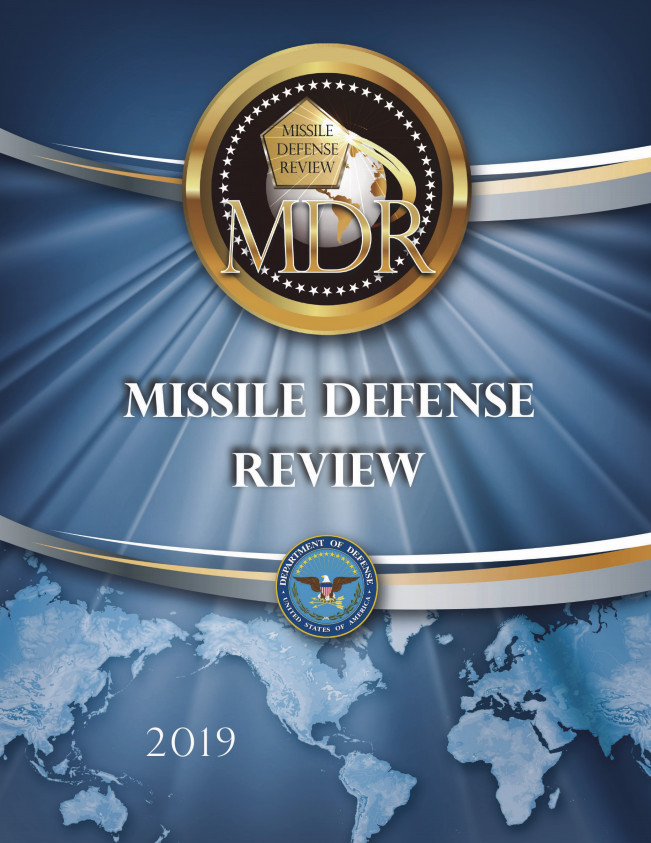
Mixed Messages On Trump’s Missile Defense Review
President Trump personally released the long-overdue Missile Defense Review (MDR) today, and despite the document’s assertion that “Missile Defenses are Stabilizing,” the MDR promotes a posture that is anything but.
Firstly, during his presentation, Acting Defense Secretary Shanahan falsely asserted that the MDR is consistent with the priorities of the 2017 National Security Strategy (NSS). The NSS’ missile defense section notes that “Enhanced missile defense is not intended to undermine strategic stability or disrupt longstanding strategic relationships with Russia or China.” (p.8) During Shanahan’s and President Trump’s speeches, however, they made it clear that the United States will seek to detect and destroy “any type of target,” “anywhere, anytime, anyplace,” either “before or after launch.” Coupled with numerous references to Russia’s and China’s evolving missile arsenals and advancements in hypersonic technology, this kind of rhetoric is wholly inconsistent with the MDR’s description of missile defense being directed solely against “rogue states.” It is also inconsistent with the more measured language of the National Security Strategy.
Secondly, the MDR clearly states that the United States “will not accept any limitation or constraint on the development or deployment of missile defense capabilities needed to protect the homeland against rogue missile threats.” This is precisely what concerns Russia and China, who fear a future in which unconstrained and technologically advanced US missile defenses will eventually be capable of disrupting their strategic retaliatory capability and could be used to support an offensive war-fighting posture.
Thirdly, in a move that will only exacerbate these fears, the MDR commits the Missile Defense Agency to test the SM-3 Block IIA against an ICBM-class target in 2020. The 2018 NDAA had previously mandated that such a test only take place “if technologically feasible;” it now seems that there is sufficient confidence for the test to take place. However, it is notable that the decision to conduct such a test seems to hinge upon technological capacity and not the changes to the security environment, despite the constraints that Iran (which the SM-3 is supposedly designed to counter) has accepted upon its nuclear and ballistic missile programs.
Fourthly, the MDR indicates that the United States will look into developing and fielding a variety of new capabilities for detecting and intercepting missiles either immediately before or after launch, including:
- Developing a defensive layer of space-based sensors (and potentially interceptors) to assist with launch detection and boost-phase intercept.
- Developing a new or modified interceptor for the F-35 that is capable of shooting down missiles in their boost-phase.
- Mounting a laser on a drone in order to destroy missiles in their boost-phase. DoD has apparently already begun developing a “Low-Power Laser Demonstrator” to assist with this mission.
There exists much hype around the concept of boost-phase intercept—shooting down an adversary missile immediately after launch—because of the missile’s relatively slower velocity and lack of deployable countermeasures at that early stage of the flight. However, an attempt at boost-phase intercept would essentially require advance notice of a missile launch in order to position US interceptors within striking distance. The layer of space-based sensors is presumably intended to alleviate this concern; however, as Laura Grego notes, these sensors would be “easily overwhelmed, easily attacked, and enormously expensive.”
Additionally, boost-phase intercept would require US interceptors to be placed in very close proximity to the target––almost certainly revealing itself to an adversary’s radar network. The interceptor itself would also have to be fast enough to chase down an accelerating missile, which is technologically improbable, even years down the line. A 2012 National Academy of Sciences report puts it very plainly: “Boost-phase missile defense—whether kinetic or directed energy, and whether based on land, sea, air, or in space—is not practical or feasible.”
Overall, the Trump Administration’s Missile Defense Review offers up a gamut of expensive, ineffective, and destabilizing solutions to problems that missile defense simply cannot solve. The scope of US missile defense should be limited to dealing with errant threats—such as an accidental or limited missile launch—and should not be intended to support a broader war-fighting posture. To that end, the MDR’s argument that “the United States will not accept any limitation or constraint” on its missile defense capabilities will only serve to raise tensions, further stimulate adversarial efforts to outmaneuver or outpace missile defenses, and undermine strategic stability.
During the upcoming spring hearings, Congress will have an important role to play in determining which capabilities are actually necessary in order to enforce a limited missile defense posture, and which ones are superfluous. And for those superfluous capabilities, there should be very strong pushback.
The Federation of American Scientists applauds the United States for declassifying the number of nuclear warheads in its military stockpile and the number of retired and dismantled warheads.
North Korea may have produced enough fissile material to build up to 90 nuclear warheads.
Secretary Austin’s likely certification of the Sentinel program should be open to public interrogation, and Congress must thoroughly examine whether every requirement is met before allowing the program to continue.
Researchers have many questions about the modernization of Pakistan’s nuclear-capable aircraft and associated air-launched cruise missiles.